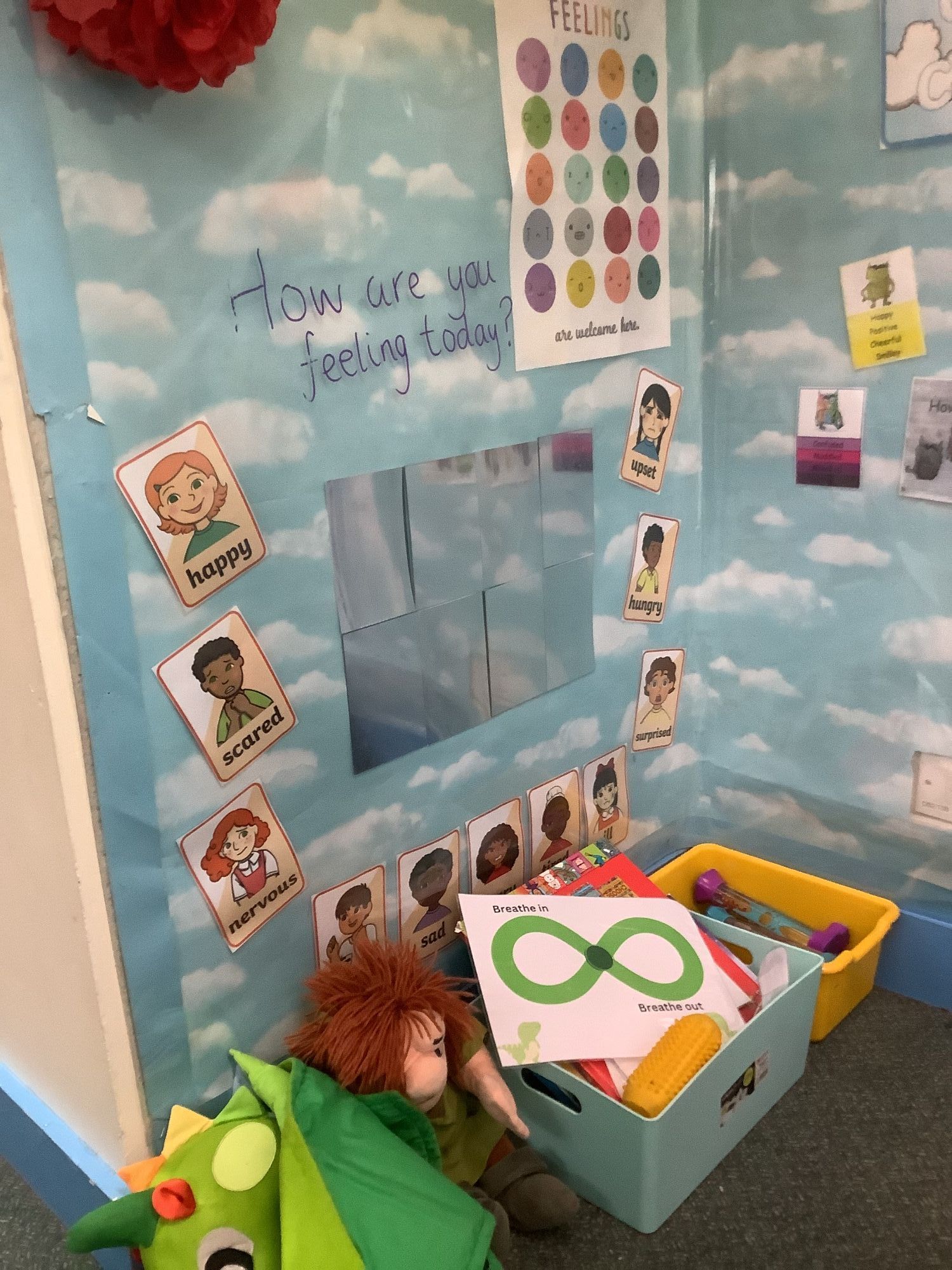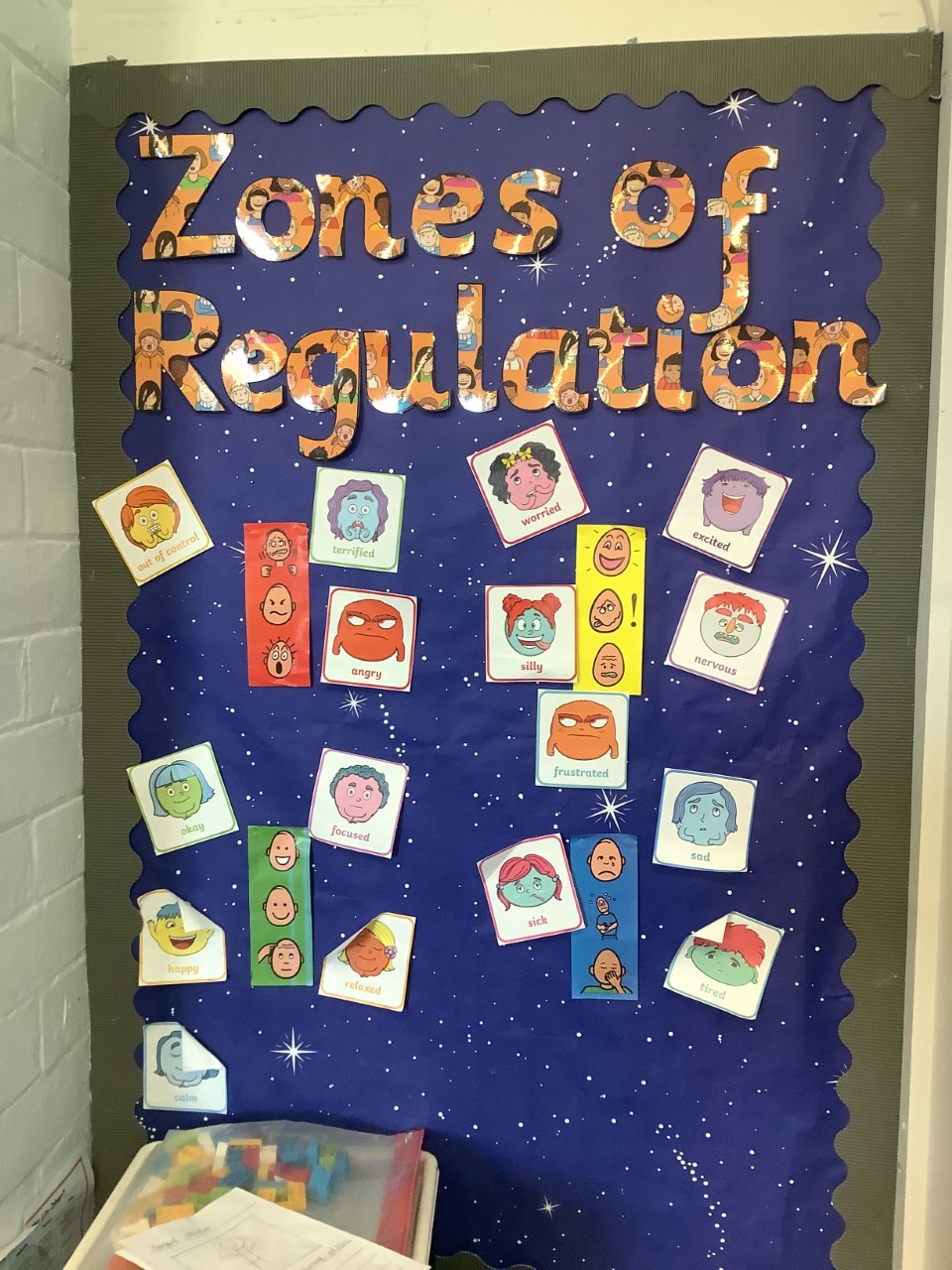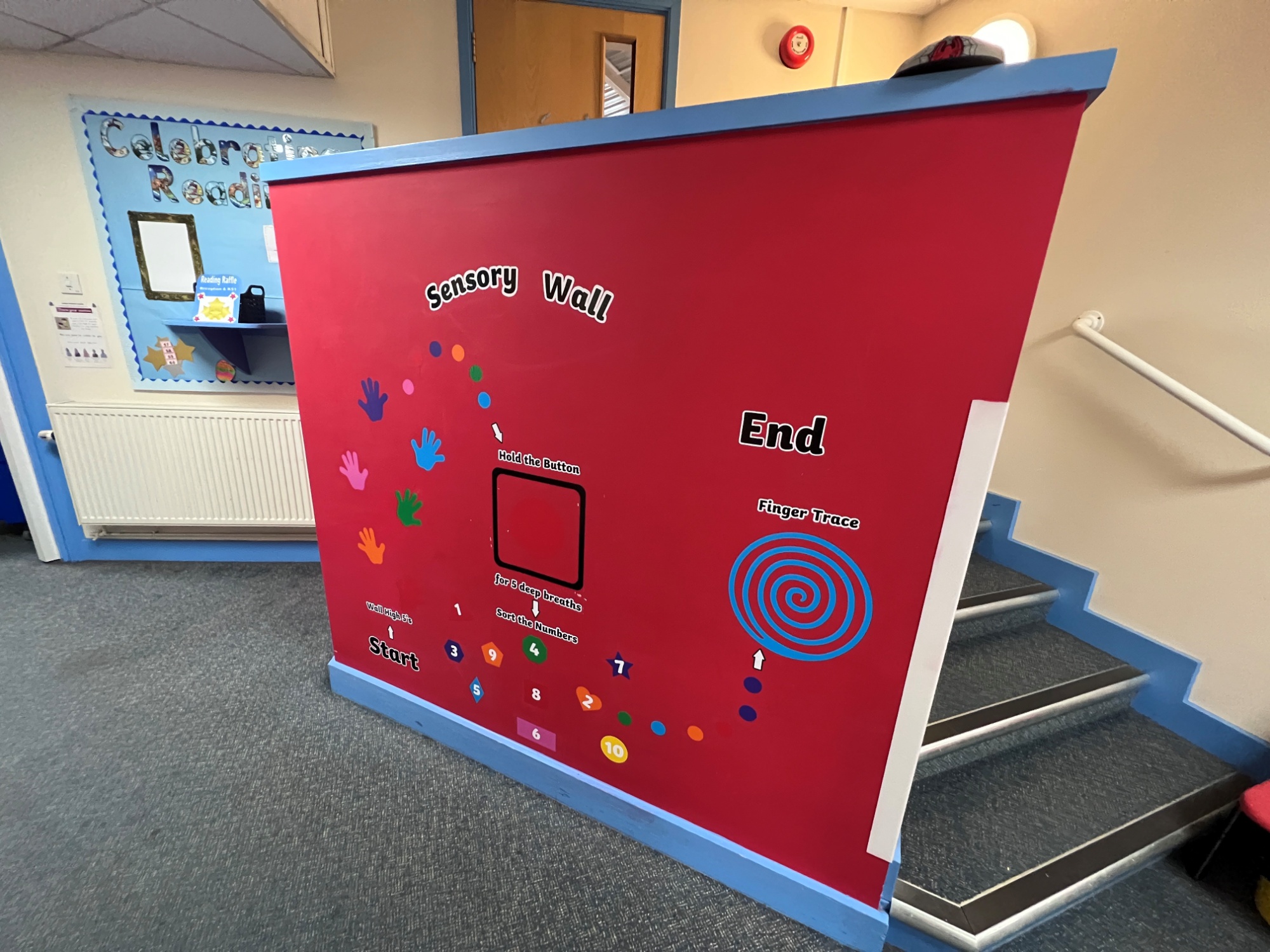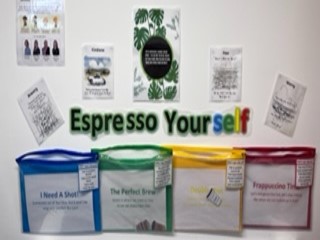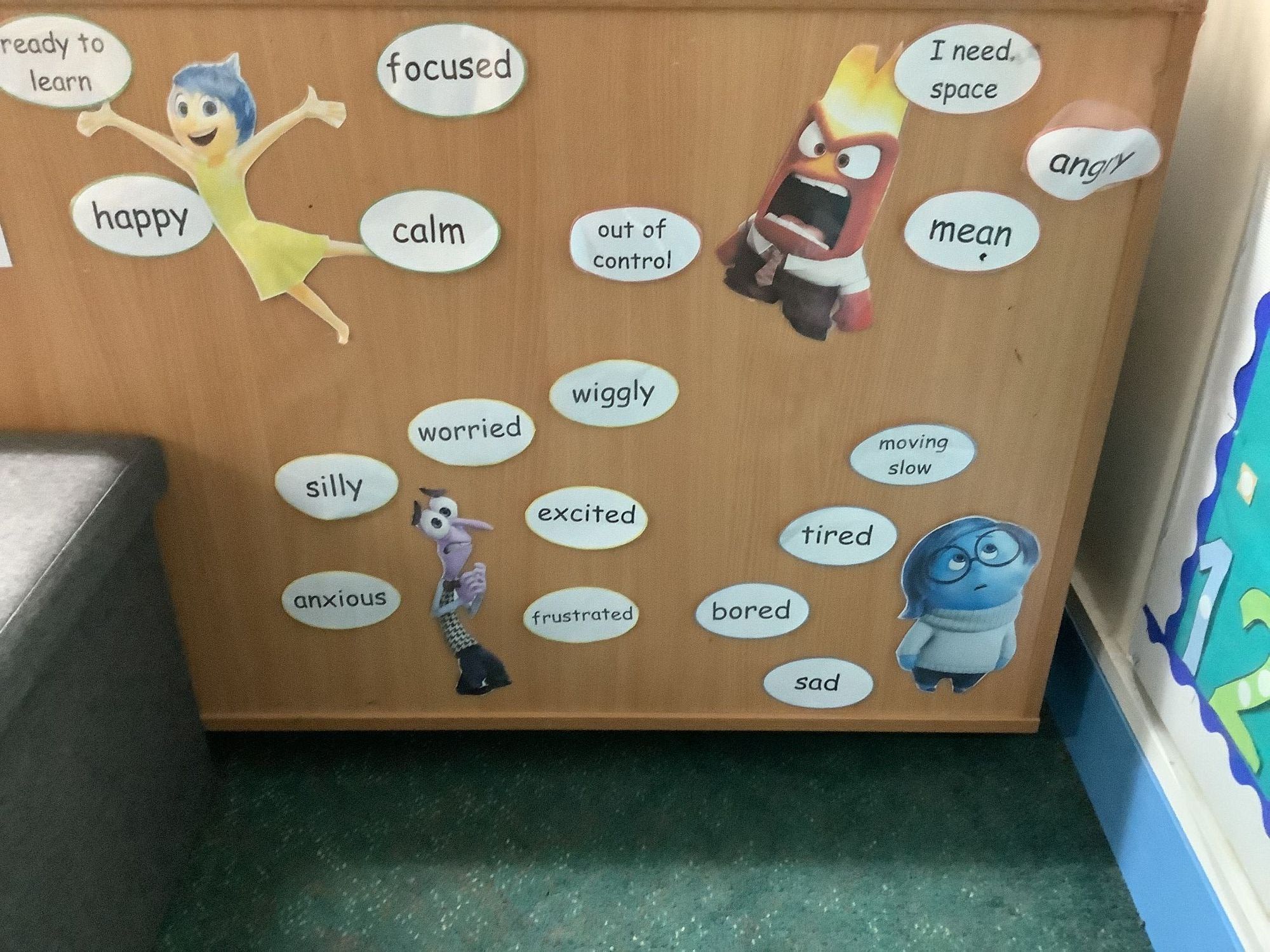Emotion Coaching
At Linden we use the Emotion Coaching approach to support children to help children to understand and regulate their feelings.
What is Emotion Coaching?
Emotion Coaching is helping children to understand the different emotions they experience, why they occur and how to handle them.
- It teaches children to trust their own feelings
- Changes our relationships with others
- Leads to SELF regulation
- Teaches lifelong emotional intelligence
- Helps develop strong relationships with others
Emotion Coaching uses moments of heightened emotion and the resulting behaviour to guide and teach children a more effective response. Through the use of Emotion Coaching, the child's emotional state is verbally acknowledged and validated, promoting a sense of security and feeling 'felt'.
What does Emotion Coaching do?
- It gives children strategies to deal with ups and downs.
- It enables children to accept negative emotions as being normal and that all emotions are normal. It also enables children to learn that not all behaviour is ok. Children learn to understand that their feelings are not the problem, their behaviour is.
- Builds trusting and respectful relationships with children.
- Gives children a vocabulary to talk about emotions.
- It gives children the ability to self-regulate.
How do we Emotion Coach?
In order to emotion coach we must be aware of our own emotions and ability to self-regulate. Ensure you remain calm whilst dealing with your child when they are in a heightened emotional state.
Children need the adult to co-regulate with them initially whilst teaching the strategies for self-regulation.
Follow the 4 steps to Emotion Coaching.
Use the zones of regulation and strategies to use with your child when they are displaying certain emotions.
4 steps to Emotion Coaching
Step 1
Recognising the child’s feelings and empathising with them – connection before correction
Step 2
Validating the feelings and labelling them – name it, to tame it
Step 3
Setting limits on behaviour (if needed)
Step 4
Problem-solving with the child
Why do children lose control of their emotions?
Zones of Regulation
The Zones provide teachers and parents a way to support children to learn about their own regulation system and how they can deal with it.
The Zones use four colours to help children identify visually and verbally how they are feeling at any particular moment. Along with being able to identify the zones and know what zone they’re in, your child also needs to know strategies to help them get back to the green zone.
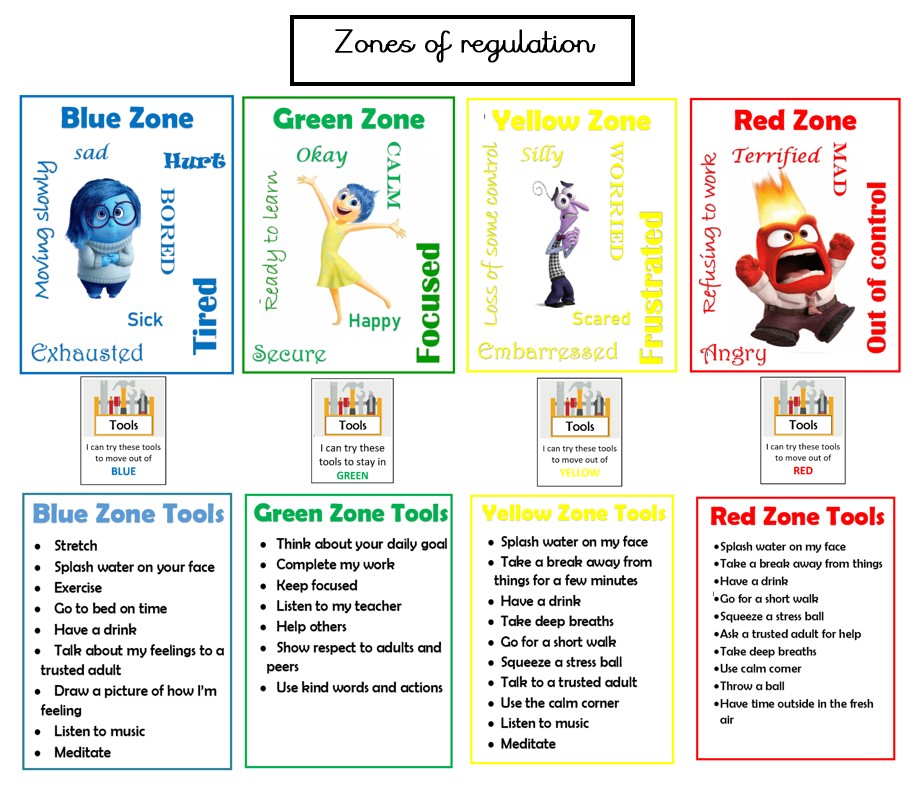
Children explore a variety of tools/strategies that they can use to regulate what zone they are in. They are taught when, why and how to use these tools.
Through discussion about the zones we can help children learn more about emotional terms, skills in reading facial expressions, recognise triggers for their behaviour and develop problem solving skills.
Emotions can confuse or overwhelm children. We need to help them learn to understand the connection between their sensory systems, emotions and their abilities to relate to the world while developing their self awareness. The goal of the Zones is to help children develop social, emotional and sensory regulation.
The Blue Zone
The blue zone, on the other hand, is used when a person is feeling low states of alertness or arousal.
When you’re in the blue zone you may be feeling down – sad, sick, tired, or bored. You’re still in control, as you are in the yellow zone, but with low energy emotions.
The Green Zone
The green zone is used to describe when you’re in a calm state of alertness.
Being in the green zone means you are calm, focused, happy, or ready to learn. This is predominantly the state you want your child to be in.
It’s also the state most needed in the classroom in order to learn.
The Yellow Zone
The yellow zone describes when you have a heightened sense of alertness. This isn’t always a bad thing, and you typically still have some control when you’re in the yellow zone.
Being in the yellow means you may feel frustrated, anxious or nervous. But, it could also mean you’re feeling excited, silly, or hyper – which is okay in the right situations.
The Red Zone
The red zone describes an extremely heightened state of intense emotions. When a person reaches the red zone, they’re no longer able to control their emotions or reactions.
Being in the red zone means you’re feeling anger, rage, terror, or complete devastation and feel out of control.
